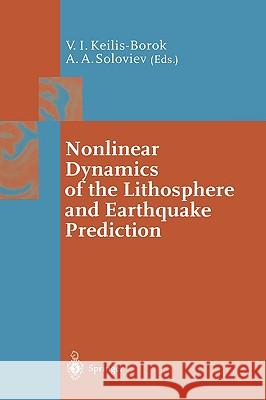Nonlinear Dynamics of the Lithosphere and Earthquake Prediction » książka
Nonlinear Dynamics of the Lithosphere and Earthquake Prediction
ISBN-13: 9783540435280 / Angielski / Twarda / 2002 / 337 str.
Nonlinear Dynamics of the Lithosphere and Earthquake Prediction
ISBN-13: 9783540435280 / Angielski / Twarda / 2002 / 337 str.
(netto: 384,26 VAT: 5%)
Najniższa cena z 30 dni: 385,52 zł
ok. 22 dni roboczych
Bez gwarancji dostawy przed świętami
Darmowa dostawa!
The vulnerability of our civilization to earthquakes is rapidly growing, rais- ing earthquakes to the ranks of major threats faced by humankind. Earth- quake prediction is necessary to reduce that threat by undertaking disaster- preparedness measures. This is one of the critically urgent problems whose solution requires fundamental research. At the same time, prediction is a ma- jor tool of basic science, a source of heuristic constraints and the final test of theories. This volume summarizes the state-of-the-art in earthquake prediction. Its following aspects are considered: - Existing prediction algorithms and the quality of predictions they pro- vide. - Application of such predictions for damage reduction, given their current accuracy, so far limited. - Fundamental understanding of the lithosphere gained in earthquake prediction research. - Emerging possibilities for major improvements of earthquake prediction methods. - Potential implications for predicting other disasters, besides earthquakes. Methodologies. At the heart of the research described here is the inte- gration of three methodologies: phenomenological analysis of observations; "universal" models of complex systems such as those considered in statistical physics and nonlinear dynamics; and Earth-specific models of tectonic fault networks. In addition, the theory of optimal control is used to link earthquake prediction with earthquake preparedness.











